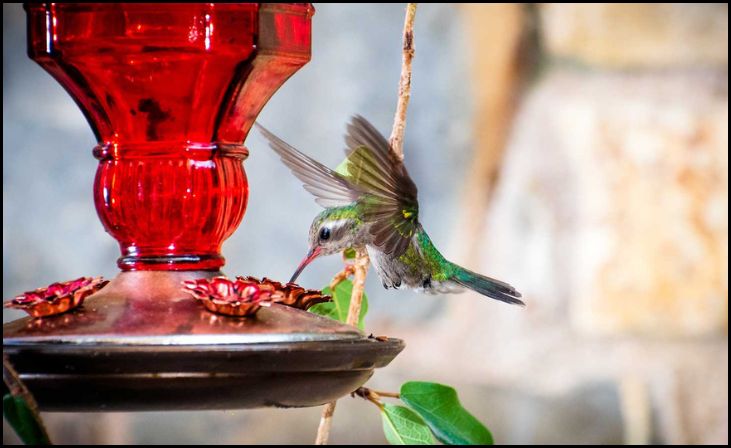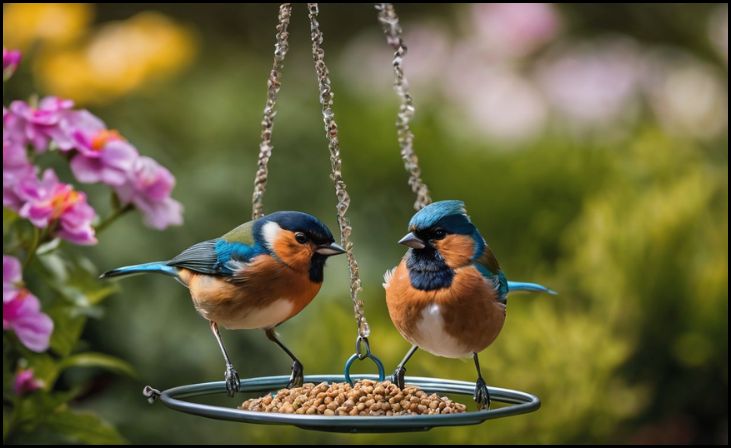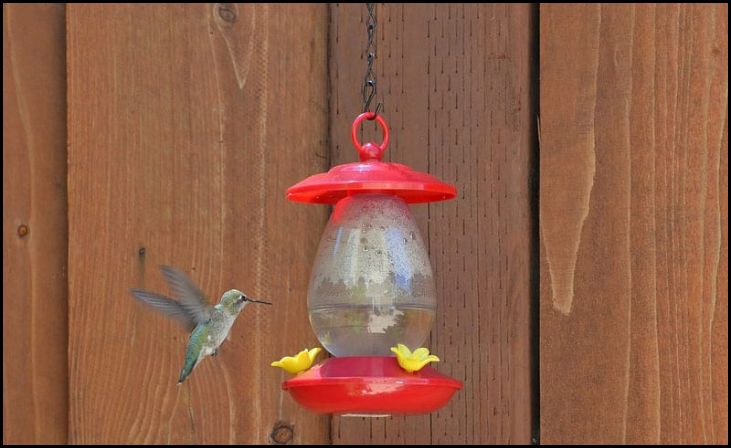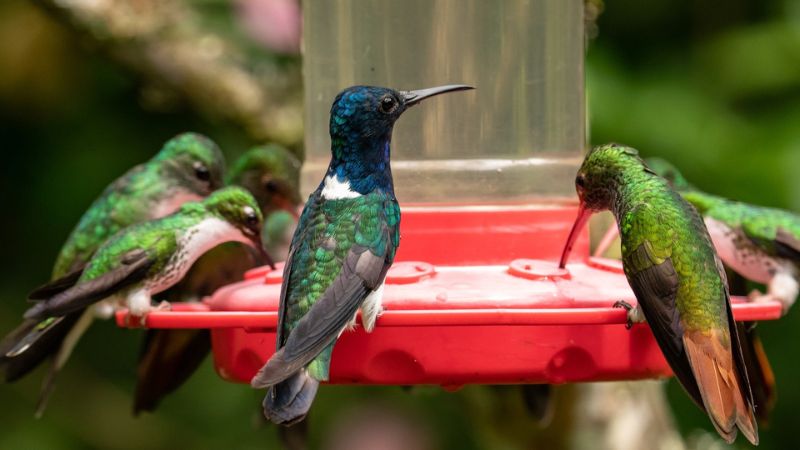Attracting hummingbirds to your garden can be a delightful experience, but it’s essential to choose the right location for your feeder to maximize its appeal to these tiny, colorful birds. Placing your hummingbird feeder involves more than just aesthetics; it requires careful consideration of factors such as proximity to nectar sources, visibility, protection from predators, and ease of maintenance. By taking these aspects into account, you can create an inviting environment that encourages frequent visits from hummingbirds while ensuring their safety and comfort. In this guide, we’ll delve into the key factors to consider when determining the best place to put your hummingbird feeder.
1. Proximity to Nectar Sources

Hummingbirds are indeed drawn to nectar-producing plants like flowers. These plants are not only a vital food source but also provide a familiar and natural environment for the birds. When placing your feeder, consider the types of flowers in your garden or nearby areas that hummingbirds frequent. The closer your feeder is to these natural nectar sources, the more likely it is to catch the attention of hummingbirds. Moreover, positioning the feeder near these plants can enhance its visibility, making it easier for hummingbirds to locate.
2. Visibility and Accessibility
Choosing a location with good visibility is crucial for both you and the hummingbirds. You want to enjoy watching these fascinating birds while ensuring they can easily find and access the feeder. Avoid placing the feeder too close to walls, windows, or dense foliage that could obstruct the birds’ view or make it difficult for them to reach the feeding ports. A clear and unobstructed path to the feeder encourages more frequent visits from hummingbirds.
3. Protection from Predators
Hummingbirds are small and agile but still vulnerable to predators like cats, larger birds, or even insects. When deciding where to hang your feeder, consider the safety of the birds while they feed. Choose a location that minimizes the risk of predators reaching the feeder, such as placing it away from areas where cats or larger birds often roam. Additionally, you can use baffles or other deterrents to further protect the hummingbirds from potential threats.
4. Shelter and Perches

Hummingbirds appreciate a safe and comfortable feeding environment. Providing natural perches near the feeder, such as trees, shrubs, or even small branches, gives the birds a place to rest and observe before or after feeding. These perches also serve as lookout spots, allowing hummingbirds to monitor their surroundings for potential dangers while they enjoy their meal.
5. Sun and Shade
Finding the right balance of sun and shade is essential for your feeder’s placement. While hummingbirds enjoy warmth, excessive heat from direct sunlight can make the feeder less appealing, especially during hot summer afternoons. Aim for a location that receives some sunlight but also offers shade at certain times of the day. This way, hummingbirds can feed comfortably without being exposed to harsh sunlight for extended periods.
6. Easy Maintenance
Consider the practicality of maintaining your hummingbird feeder when choosing its placement. Opt for a location that allows easy access for refilling nectar and cleaning the feeder. Avoid placing it too high or in a spot that requires climbing or reaching over obstacles, as this can make routine maintenance tasks challenging and less frequent.
7. Traffic and Noise
Hummingbirds are sensitive to disturbances like loud noises or frequent human activity. When selecting a location for your feeder, take into account the level of traffic and noise in that area. Choose a relatively quiet and peaceful spot where hummingbirds can feed undisturbed. Minimizing disturbances increases the likelihood of regular visits from these beautiful birds.
8. Avoiding Window Collisions

To prevent hummingbirds from colliding with windows, be mindful of the feeder’s proximity to reflective surfaces. Placing the feeder too close to windows or glass doors increases the risk of collisions, which can be harmful or even fatal to the birds. If necessary, use decals, stickers, or other markers on windows to make them more visible to hummingbirds and reduce the chances of accidents.






